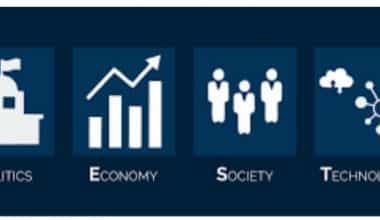Harassment is a very serious issue that should not be taken lightly. It can take many forms, from physical to verbal, and can have a devastating effect on the victim. It’s important to remember that harassment is illegal and can lead to serious legal repercussions. In this article, we’ll discuss examples of harassment at work, different types, laws, how to prove it, and more.
Types of Harassment
Harassment can take many forms, from physical to verbal, and it can be done in person or online. It’s important to understand the different types of harassment so you can recognize it and know how to respond if you’re ever a victim.
The most common types of harassment are sexual, racial, and religious. Sexual harassment includes inappropriate comments or behavior, such as jokes, gestures, or physical contact. Racial harassment includes comments or behavior that is based on someone’s race, such as jokes or slurs. Religious harassment includes comments or behavior that is based on someone’s religion, such as jokes or slurs.
It can also include cyberbullying, which is when someone uses the internet to harass or threaten another person. Cyberbullying can take many forms, such as sending threatening messages or posting private information online. Cyberbullying can be particularly damaging because it can reach a wider audience.
Types of Harassment in the Workplace
Here are the most prevalent forms of workplace harassment:
#1. Discriminatory
A person experiences discrimination when they are the target of improper workplace harassment. Unlike to other types of harassment like physical or verbal abuse, discriminatory harassment is defined by its intent rather than how it is carried out.
There are many different types of discriminatory harassment, some of which are simple to spot:
- Racist acts are committed against victims based on their race, ancestry, skin tone, nationality, or country of origin. Racial insults, slurs, jokes, expressions of disgust, insulting remarks, and other forms of racial harassment are only a few examples.
- Gender discrimination takes the form of gender harassment. One example is the negative gender stereotypes that dictate how men and women should behave.
- Religious Harassment: Sometimes mistaken for racial, religious harassment focuses on the victim’s religious beliefs. Examples include pressure to convert to a different religion, intolerance of religious holidays, customs, and rituals, as well as unpleasant religious humor.
- Disability-Based Harassment: This sort of harassment includes taunting, refusing to provide accommodations, and making patronizing remarks. It is primarily intended for those who are disabled, are related to someone who is disabled, or use services for the disabled.
#2. Individual Harassment
There is no protected class represented by the victim in this type of workplace harassment (such as religion, race, and gender). Although this kind of bullying is not prohibited, it nonetheless has the potential to be harmful. Included is any conduct that renders the victim’s workplace intimidating or offensive.
#3. Physical Harassment
This is commonly referred to as workplace violence, using threats or actual physical violence. When they take things too far, they could also be regarded as an assault. The line between what is appropriate and what is inappropriate can frequently be blurred by physical gestures like shoving with humor. It is therefore up to the person experiencing the behavior to decide if it is appropriate or threatening.
#4. Abuse of Power
One characteristic of power harassment is that there is a disparity in power between the harasser and the harassed. The victim is bullied by the harasser, who is higher up in the office hierarchy, using his or her position of power. This issue typically involves supervisors and subordinates. Examples of this include stalking, assaults, and—most frequently—psychological harassment.
#5. Psychological
Such harassment has a detrimental effect on a person’s mental health. Psychological victims frequently feel disregarded or denigrated on personal, professional, or both levels. Their physical health, social lives, and employment are all negatively impacted by their psychological damage.
#6. Cyberbullying
It is common practice in the contemporary workplace to implement internet-based apps in order to benefit from the internet and appeal to the younger generation of employees. Instant messaging apps are well-liked for their quickness, practicality, and user-friendly design.
Bullies might utilize this technology to harass their targets because it has a number of disadvantages. Cyberbullying and online harassment are growing concerns for employers.
#7. Reprisal Harassment
Many people are unaware of the subtle manner in which reprisal harassment occurs. It happens when someone harasses another person to exact revenge for previously complaining about them and to deter them from complaining again.
#8. Sexual
Any sort of sexual harassment, including unwanted sexual actions, attempts, or conduct. Sexual harassment has an instant impact, but other types take longer to manifest or worsen. This is one of the illegal forms of workplace discrimination that is dealt with right away.
#9. Third-party Harassment
This is a sort of workplace harassment where the offender is a third party or someone from outside the company. In contrast to most situations when the harasser is a coworker, manager, or supervisor, in this case, the third party is a supplier, vendor, client, or customer of the organization.
The victims are often younger employees in low-status positions, such as cashiers and sales workers. They are easy prey because of their position within the company, lack of expertise, and unwillingness to speak up out of fear of losing their jobs.
#10. Verbal
Verbal abuse against workers is a common occurrence. It could result from personality conflicts that went from a light eye roll to a rough argument. Unlike many other forms of discrimination, verbal abuse between people is not illegal. It typically shows up as a persistently rude and annoying person.
As a result, verbal abuse at the workplace frequently has negative effects and demoralizes workers because they are unwilling to help the abuser. Some of the most blatant verbal harassment activities include cursing, yelling, threatening, and criticizing a victim in front of others or in private.
Harassment at Work Examples
There are many examples of harassment at work, and it’s important to be aware of them so you can recognize and respond to them appropriately.
One example is a coworker making inappropriate comments or jokes about someone’s gender, race, or religion. Another example is a supervisor making unwelcome sexual advances or comments.
Harassment can also include physical contact, such as unwanted hugs or touching. It can also include cyberbullying, such as sending threatening messages or posting private information about someone online.
Harassment Laws
Harassment is illegal in many countries and can lead to serious legal repercussions. It’s important to understand the laws in your area so you know how to respond if you are ever a victim.
In the United States, the laws regarding harassment vary from state to state. Generally speaking, the laws prohibit any kind of harassing behavior that is based on someone’s race, religion, gender, or sexual orientation.
It’s also important to understand that harassment can include cyberbullying and that the laws apply to online behavior as well as in-person behavior.
What is the actual meaning of harassment?
The actual meaning of harassment is any kind of unwelcome or offensive behavior that is based on someone’s race, religion, gender, or sexual orientation. This can include verbal or physical abuse, as well as cyberbullying. Harassment is illegal and can lead to serious legal repercussions.
What are the five D’s of harassment?
The five D’s are:
- Denial: Denying that the harassment is taking place.
- Denigration: Making negative comments or jokes about someone.
- Discriminatory: Treating someone differently because of their race, religion, gender, or sexual orientation.
- Disenfranchisement: Making it difficult for someone to do their job or participate in activities because of their race, religion, gender, or sexual orientation.
- Destruction: Intentionally damaging someone’s property or reputation.
How do you prove harassment?
Proving it can be tricky and it’s important to understand the legal requirements in your area. In general, you will have to show proof that the harassment happened and that it was unwanted.
Evidence can include emails, text messages, written documents, and witness statements. It’s important to keep all evidence in a safe place and to document any instances of harassment as soon as possible.
What is the most common form of harassment?
The most common form is sexual harassment. This includes unwelcome sexual advances or comments, as well as inappropriate physical contact. It’s important to be aware of the signs of sexual harassment so you can recognize it and know how to respond if you’re ever a victim.\
How Should Workplace Harassment Be Reported?
Every organization has a human resources department, which is designed to assist employees who are in critical situations. Whether they are uneasy or in danger, or are threatened by a coworker, good human resource practices ensure their safety and job security.
The lack of physical evidence in most grievances or harassing behaviors should not deter a victim from filing an official complaint.
According to Mooney, reporting workplace harassment is necessary because other victims may have reported similar offenses by the same offender.
Many organizations have strict anti-harassment policies in place, but some smaller organizations may not. We encourage employees, and especially leaders and human resource managers, to take the following steps:
- Try to have a calm one-on-one conversation with the harasser. Request that they refrain from directing such disparaging remarks toward your employees (victims). If the abuse is physical, however, do not approach the harasser; instead, take direct action.
- If an employee complains about harassment and you notice that the perpetrator is in a position of authority, bring the matter to the attention of HR if your attempts to resolve it with the harasser fail. Consider providing evidence, such as screenshots, eyewitnesses, or text messages, if you have any.
- If you believe that your company did not handle employee complaints diligently, contact the EEOC, which can conduct an impartial investigation. As they have their own laws and agencies governing workplace behavior, assist your employees in contacting them.
Conclusion
Harassment is a serious issue that should not be taken lightly. It can take many forms, from physical to verbal, and can have devastating effects on the victim. It’s important to understand the different types of harassment, the laws regarding harassment, and how to prove harassment if you ever need to. Harassment is illegal and can lead to serious legal repercussions, so it’s important to be aware of it and know how to respond if you’re ever a victim.
- HARASSMENT AT WORKPLACE: Forms, Example & Best Ways to Deal With Harassment
- Bill Collector: Meaning, Duties & Salary
- HARASSMENT CHARGES: How to Press Harassment Charges
- VERBAL COMMUNICATION: As It Relates to Business
- HARASSMENT IN THE WORKPLACE: Effective Ways How to Find Out and Deal With It






